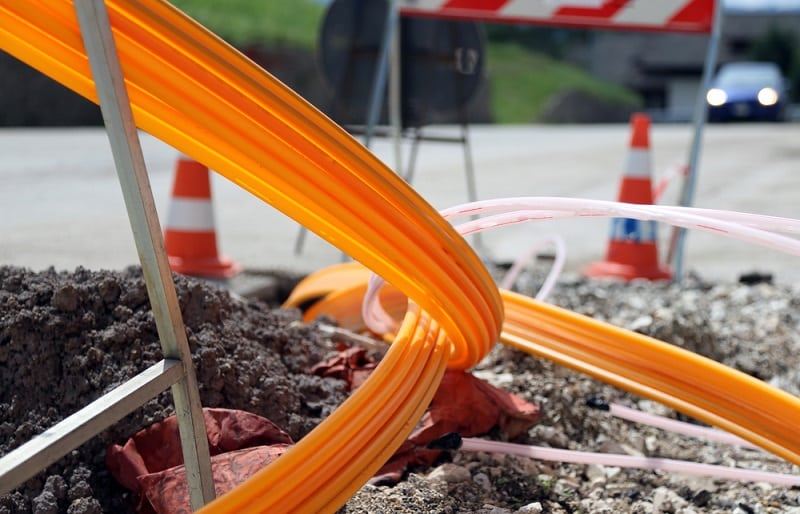
Fiber optic cable technology provides a faster way to transmit data over a single fiber optic line through the use of light pulses instead of electricity currents. As a result the concept has enabled business and organizations to send data much faster than the predecessors to fiber optic and in a more cost effective manner.
Fiber Optic Cable Types
There are different types of fiber optic cable connections that are used for different methods of data transfer.
- Single-Mode Fiber Optic: A single-mode fiber optic connection is used for longer cable runs due to the fact that it only allows for a single stream of data flow. The single stream of data is transmitted through a single light pulse which carries a significant amount of bandwidth providing for a faster transmission of data. Single-mode fiber optic is used for Ethernet connections that require long distances for data transmission.
- Multi-Mode Fiber Optic: A multi-mode fiber optic connection allows the pulses of light to travel through several different paths instead of a single path. The connection transmits data through more than one pulse of light which allows more data to travel over a single fiber optic line. Although more data can be transmitted through this method there is less bandwidth available when compared to a single-mode fiber optic connection. As a result, multi-mode fiber optic is used shorter distances for data transmission such as Local Area Networks (LAN).
- Plastic Fiber Optic: Plastic fiber optic differs from single-mode and multi-mode fiber optic because the cables are made of plastic instead of glass. Therefore, plastic fiber optic is generally not used to transmit data because it does not have the capability to offer reliable data transmission. Instead plastic fiber optic is used to create impressive light displays and other ornamental purposes. Technology specialists have experimented with plastic fiber optic for data transmission because it is easier to install and work with, however the results so far have been inconclusive as to whether it can be a possible alternative to traditional fiber optic cable connections.
Uses of Fiber Optic Cables
Fiber optic cables serve many purposes in addition to being utilized for data transmission and telecommunications. Medical institutions use fiber optic cables for laser surgery and imaging tools for medical diagnosis. The government deploys fiber optic to establish connections with aircrafts, submarines, and other military vehicles as well as for use with field networks.
In the television industry fiber optic cable is deployed to create high definition television displays, high tech video applications, and high speed Internet connections for your PC or television.
In the industrial and commercial arena, fiber optic is used as an imaging tool for remote areas that are unable to be reached with wires. Fiber optic is also capable of being used for automobile wiring and devices that regulate temperatures and other types of measurement. It is widely used for research and development over a wide field of industries and sciences.